How to use a French press
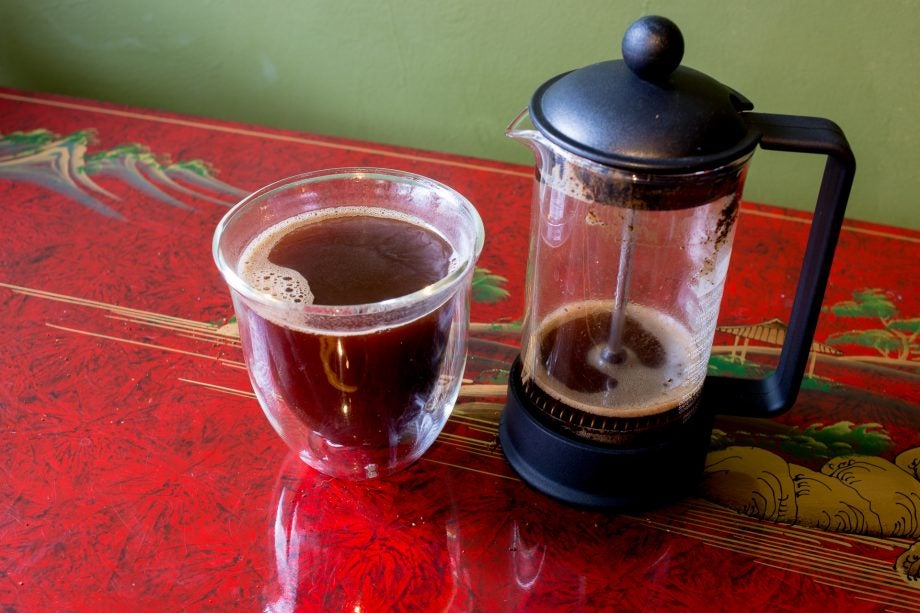
You can make excellent coffee using any of our list of best coffee machines, but the French press – or cafetière, as it’s more widely known – remains an excellent alternative. Whether it’s to enjoy the finer notes of a single-origin brew, a convenient way to make a larger pot of coffee, or a simply a way to make a drink at work or when on holiday, the French press is a great way to make your favourite drink.
Using a French press may appear simple, but getting the best cup of coffee takes a little practice, so just follow the steps to make your perfect coffee.
Should you use a glass or metal French press?
When buying a French press, you’ve probably seen that there are two main types of cafetiere, glass and metal. In truth, there’s very little difference between the two regarding taste, but each has its own advantage. With a glass model, you can see what’s going on, and this can add to the coffee-making experience; with a metal cafetiere, you can’t see inside and have to judge the plunger depth by feel alone.
Glass French presses tend to warm quicker but lose their heat faster. As such, you can get buy without pre-warming without fear of losing any heat. Metal French presses can be cold to the touch, so benefit from pre-warming.
Finally, as good as toughened glass is, metal is far more robust. If you’re planning on using a French press in a shared office or for travel, then a metal model will be hardier and should last for longer.
1. Pre-warm your French press
Boil your kettle and then fill your French press with water. Similar to pre-warming a gravy boat, this step prepares your cafetière to ensure it’s warm when you start to add your coffee.
Related: Best kettles
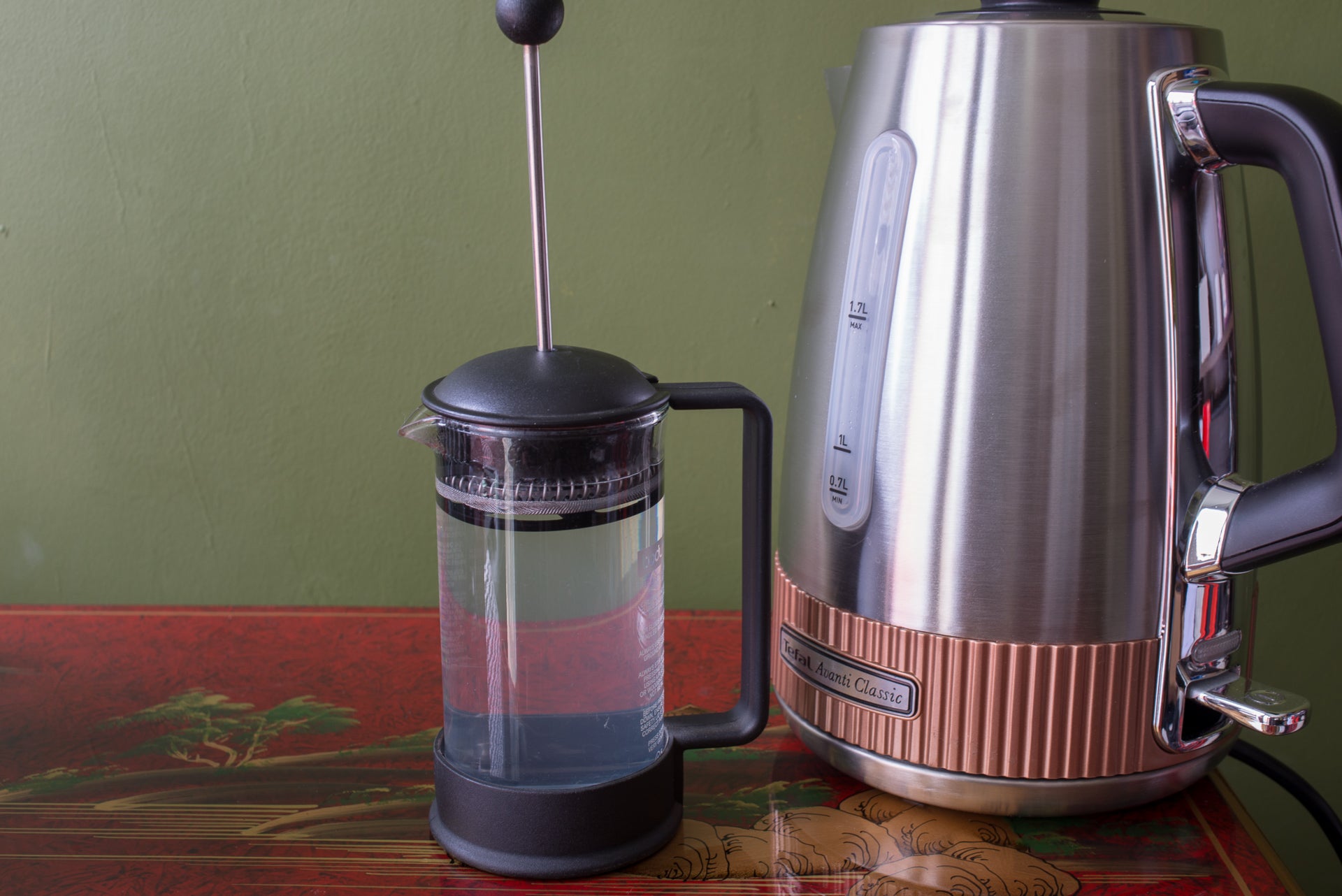
2. Grind your beans
A coffee grinder is a must for freshly ground coffee, although you can use pre-ground beans if there’s no alternative. Use a medium-to-coarse grind: you need large enough grounds so that the coffee is retained by the French press’ filter. If you find too many coffee grounds in your finished cup, then you need to grind a little coarser.
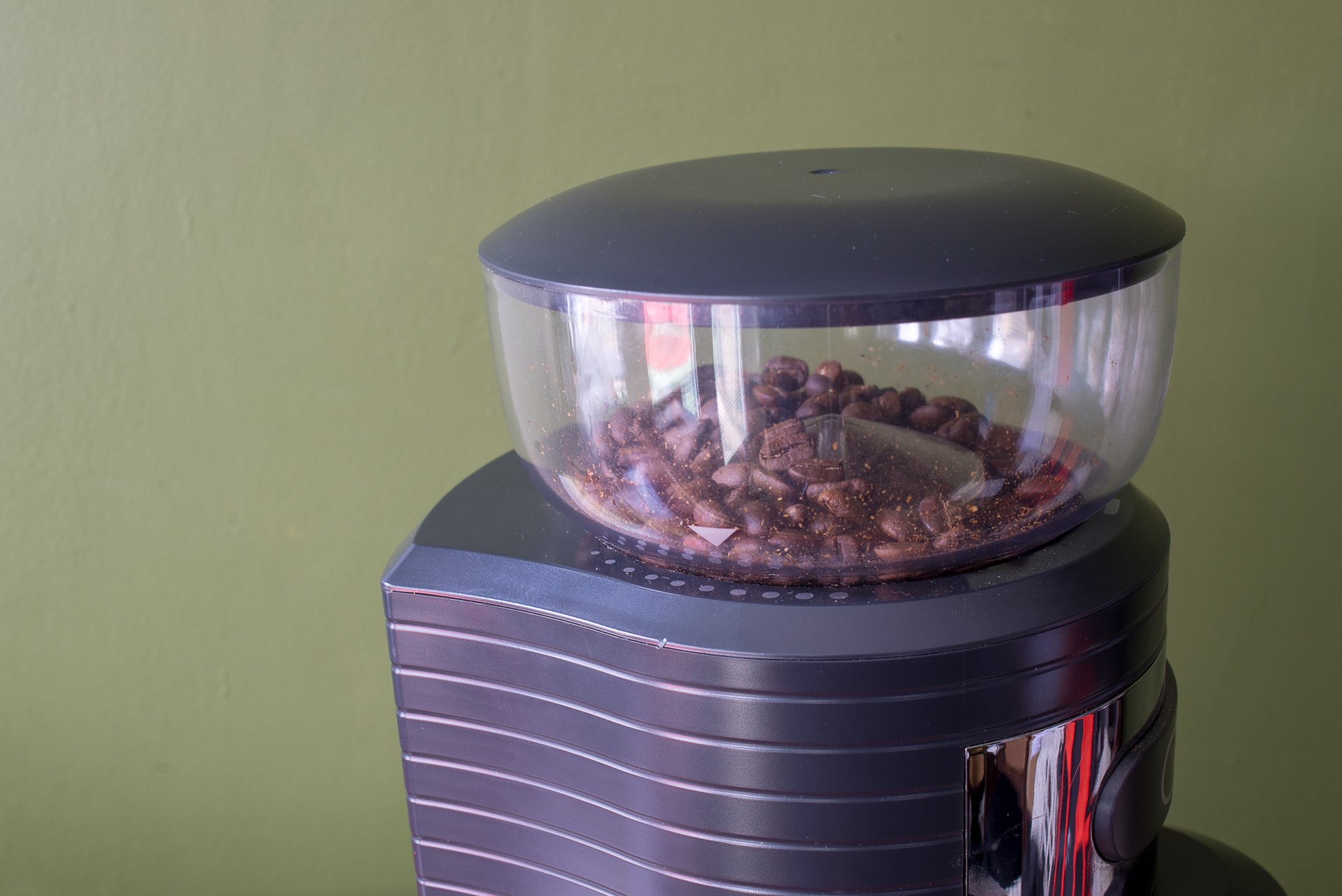
3. Measure out your coffee
Empty your cafetière of water, so you can add your coffee. The typical amount is two heaped tablespoons of coffee per cup of coffee you want to make. There’s no official definition of what a ‘cup’ size is, but around 150ml makes sense, so go with my guide and either add more coffee to make it stronger, or use less coffee to make it weaker.
If your grinder features a dosing control, you can use this to grind the exact amount of coffee you need.
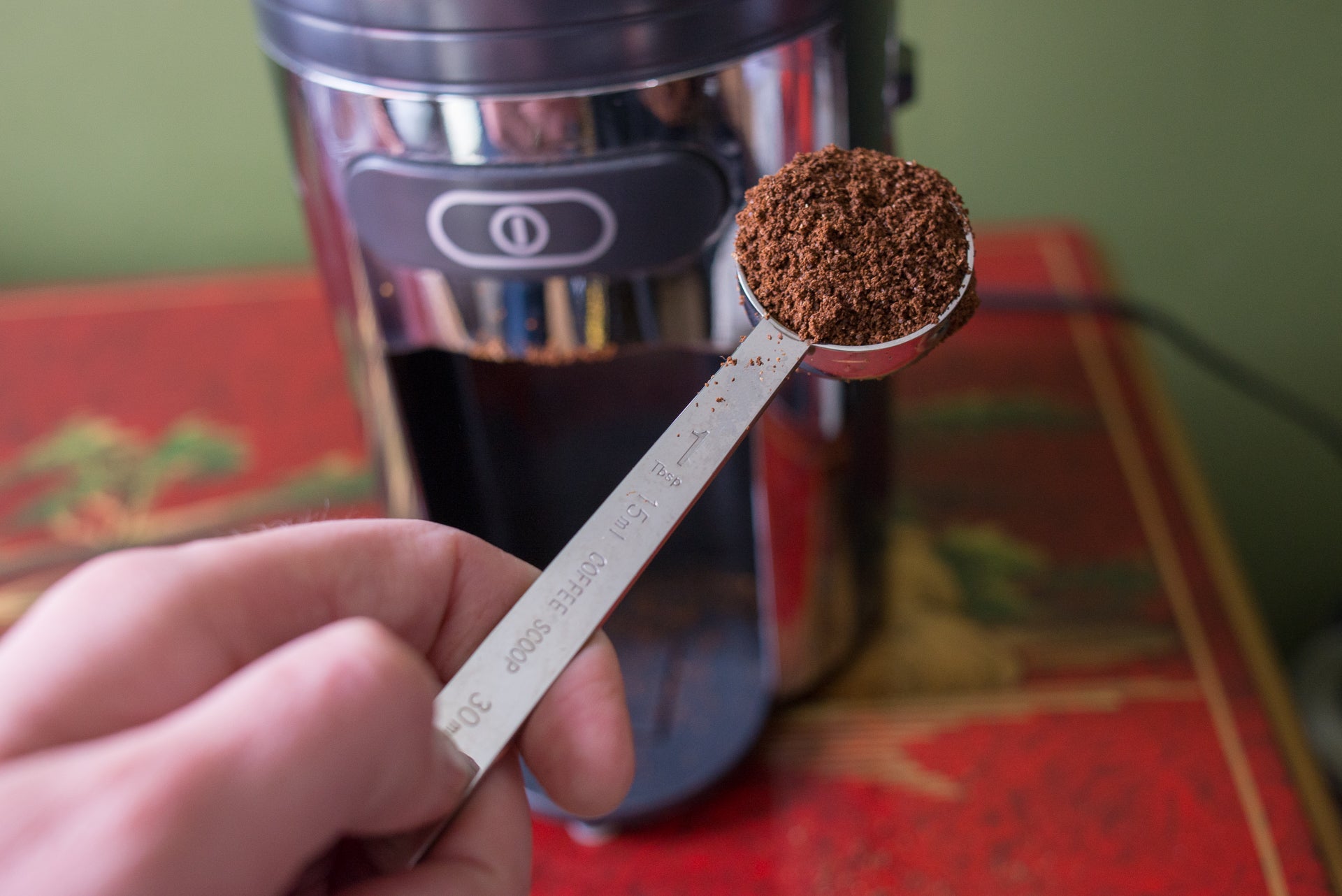
4. Add hot water
The first question to ask is, should you use tap water or filtered water? The answer, all comes down to taste, as the water you use will affect the final taste of your coffee. In the most simple terms, if you’re not a fan of your tap water (and taste varies depending on location), then you may find that French press coffee made from it doesn’t taste quite right. In this case, you should use a water filter first, adding this to your kettle; if you like your tap water, then you can go right ahead. If you don’t have a water filter, then bottled water will do the job, but this can get expensive, so it’s not an option that’s easily recommended.
Coffee boiled is coffee spoiled, so don’t use boiling water straight from the kettle. Advice on the temperature of water will vary depending on where you look, but the water should be no hotter than 95ºC. Somewhere around 90ºC is better; don’t go colder than 85ºC.
Use a thermometer to measure your kettle’s temperature the first time you use a French press, and time how long it takes the water to drop to the perfect temperature. That will make it quicker next time.
Alternatively, if you want more control over water temperature, then you can buy a kettle that lets you set the boiling temperature. The Sage Smart Kettle BKE820UK lets you set 5⁰C increments, from 80⁰C to 100⁰C, giving you plenty of scope for high-quality coffee and different varieties of tea. The Smarter iKettle 3.0 gives you app control, which lets you set temperature in 1⁰C increments. Be warned, this kettle tended to warm the kettle a few degrees warmer than the set temperature in our tests, so you may need to measure its output to get the right setting.
In either case, being able to get your water to the right temperature right out of the kettle could be useful if you regularly make French press coffee. These kettles certainly take the guesswork work and waiting out of the equation and let you more easily experiment with different temperatures, which is more important if you’re trying different, more expensive varieties of coffee. For the latest recommendations, check out our best kettles guide.
Once your water is at the right temperature, pour it slowly into the French press. If your coffee is fresh, you’ll see a rich foam on top. Out-of-date coffee will leave a flat and dull finish.
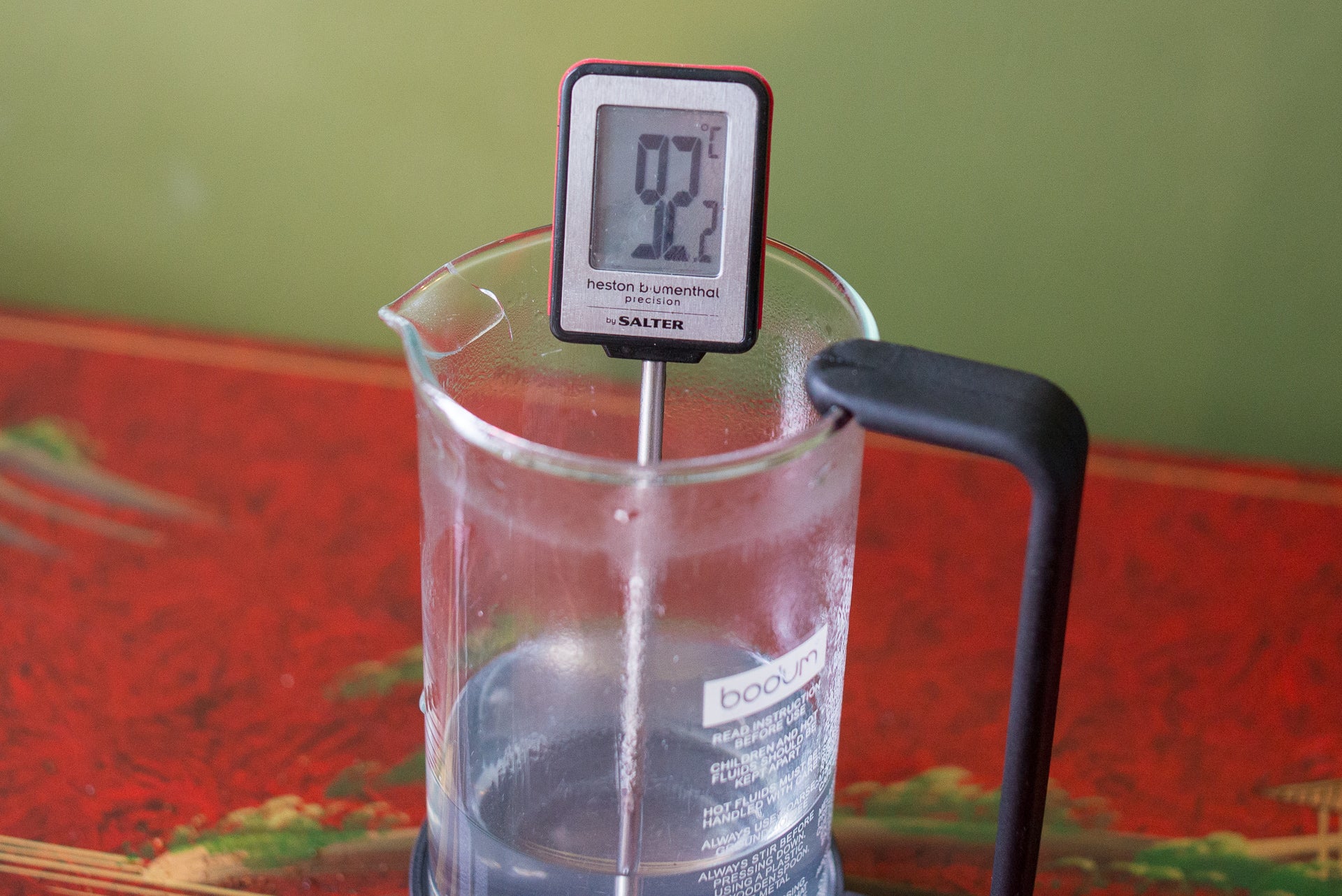
5. Stir your coffee
Stir your coffee granules into the water gently. If you use a metal spoon, be careful not to crack a glass French press. Simply stir gently to mix the water and coffee grounds.
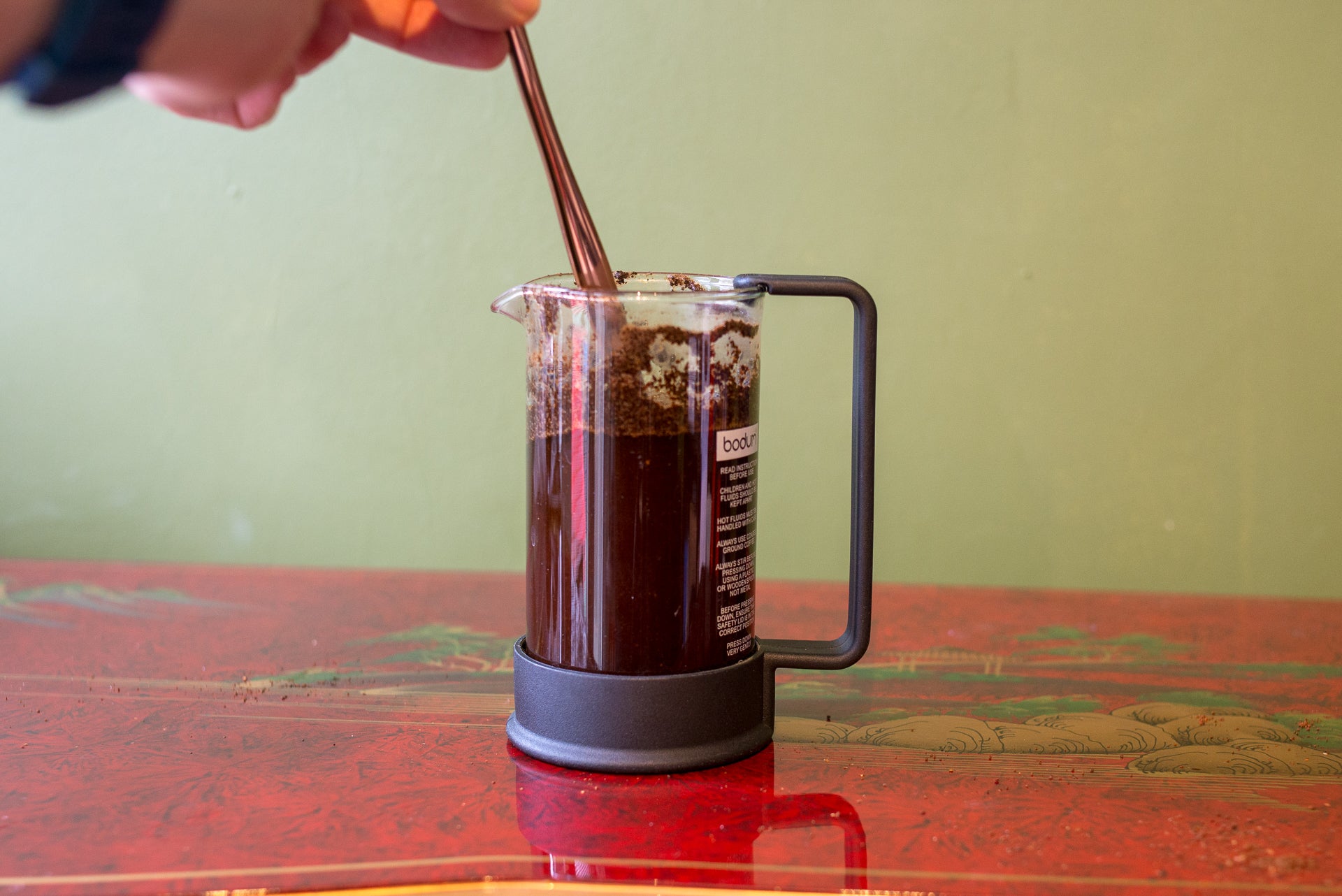
6. Wait for the coffee to brew
Add the lid of the cafetière and slowly push down the plunger until the coffee grounds are sitting just beneath the surface of the water. Then, sit back and let the coffee brew. Again, the time to brew will depend on taste you wish to achieve. Anywhere between three to five minutes will be right, depending on how strong you like your coffee; most people say four minutes is right. Experiment with different brew times to see which delivers your perfect cup of coffee. You may even find that different times work better with different types of coffee.
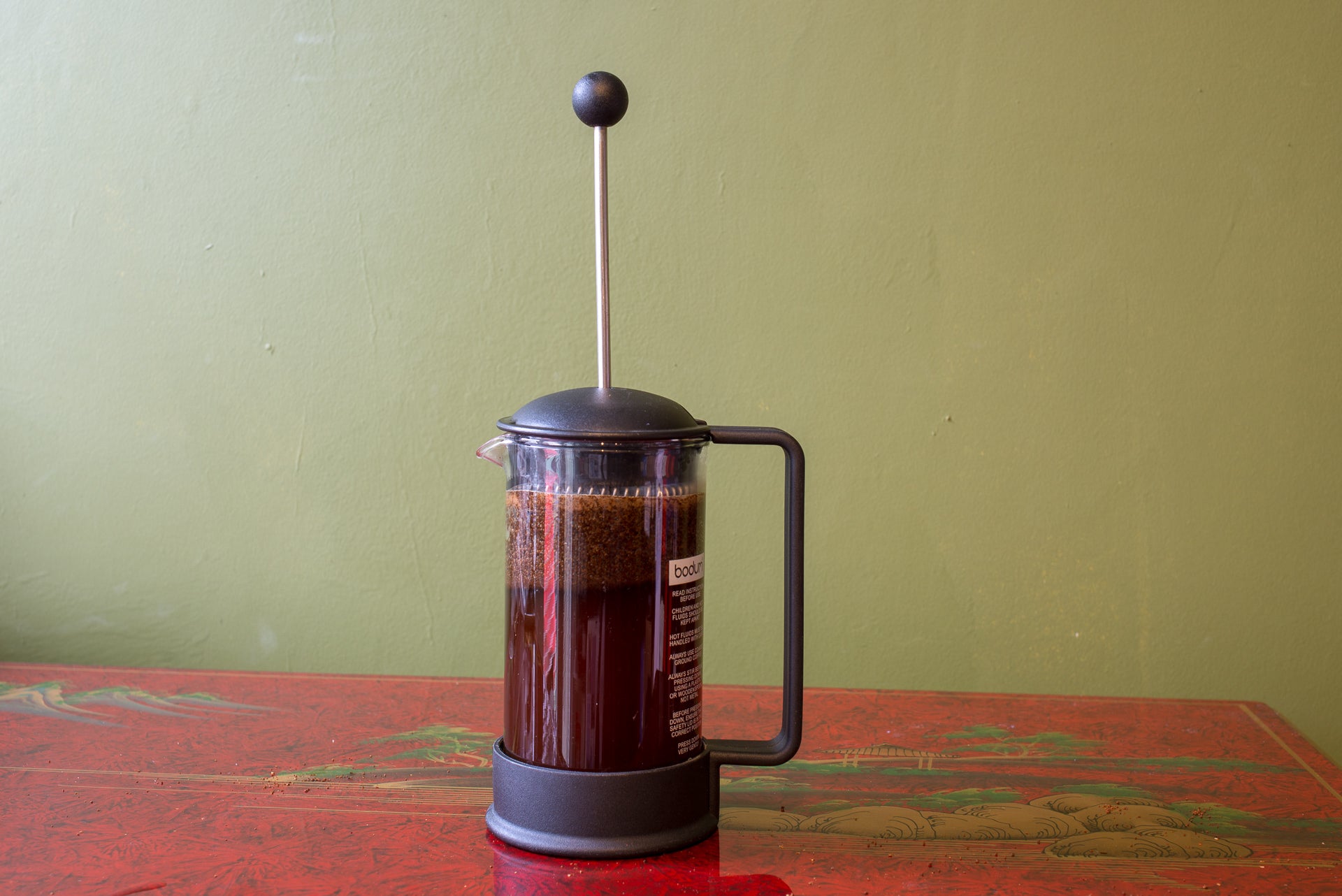
7. Press down the plunger
When your time’s up, slowly depress the plunger until it’s all the way down: a slow and smooth action is best, since it ensures you don’t force coffee up and out of the spout. This action pushes the coffee grounds down and away from your coffee granules.
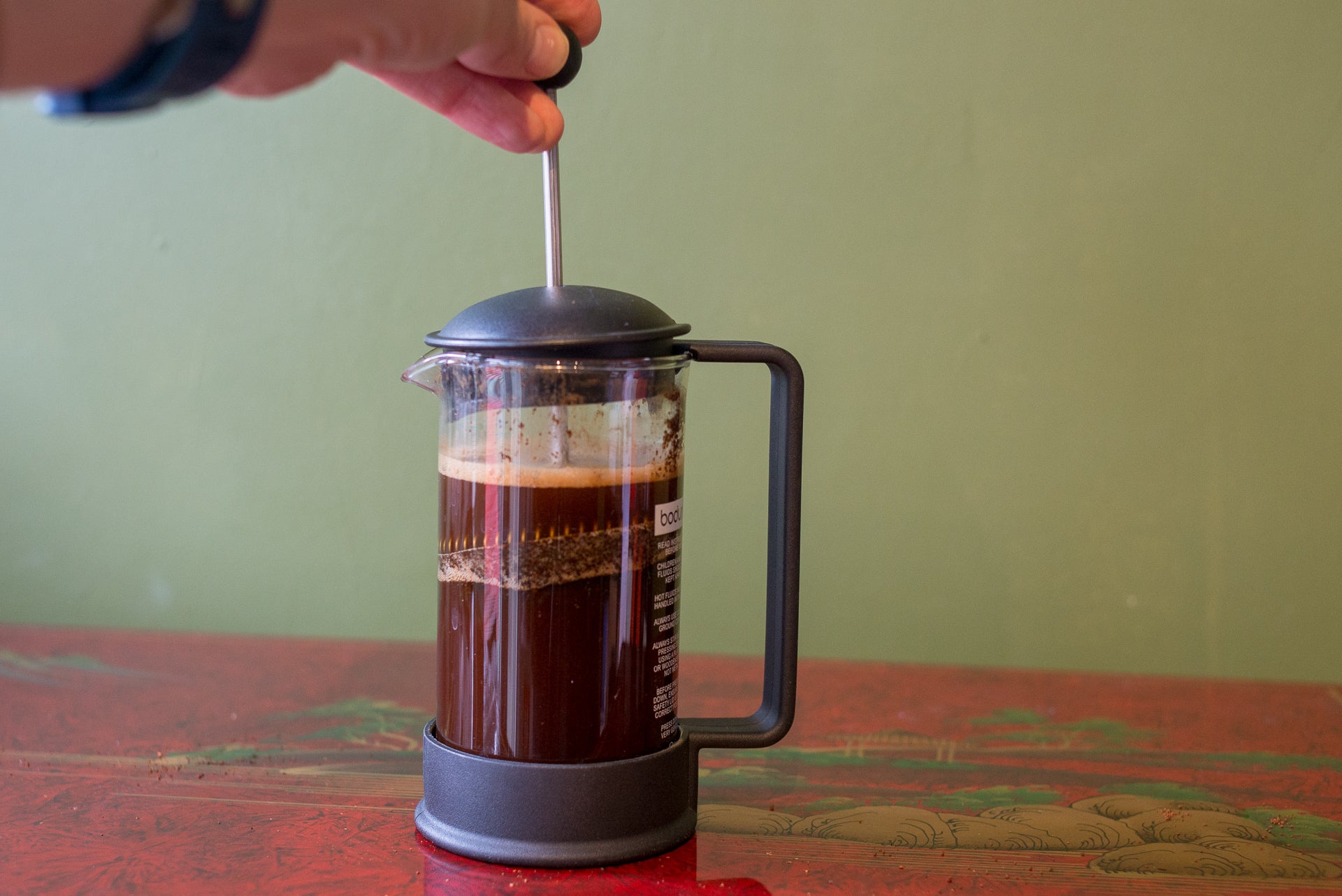
8. Drink your coffee
Pour your coffee immediately into a cup. If you prefer, you can pre-warm your cups by filling with hot water first, and emptying before you pour your coffee.
It’s best to empty the French press where you can, because the coffee grounds left inside still make contact with the water, continuing the brewing process. Coffee left for too long in the cafetière will become bitter with time.
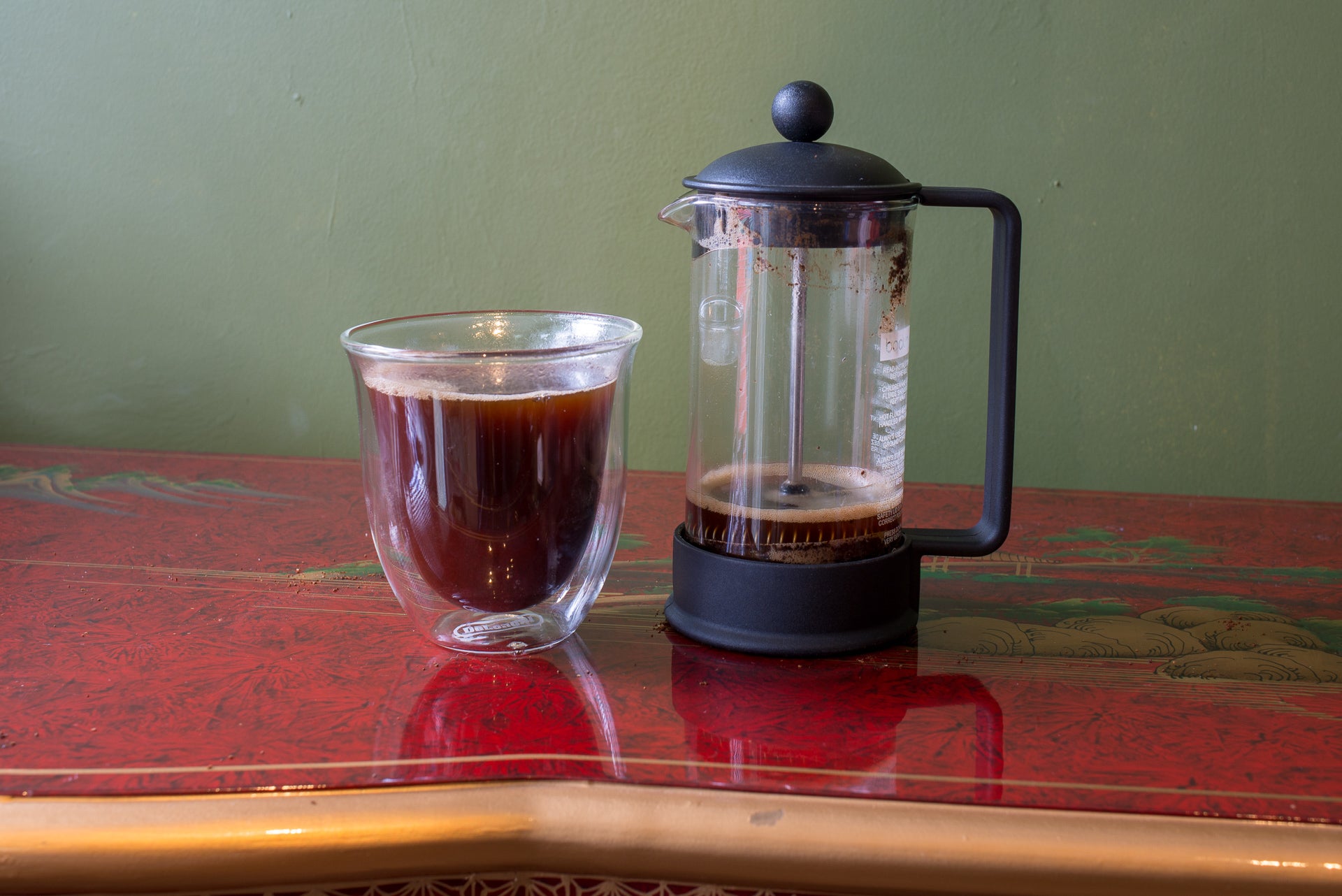
Got any coffee tips? Let us know about them on Twitter, @TrustedReviews


